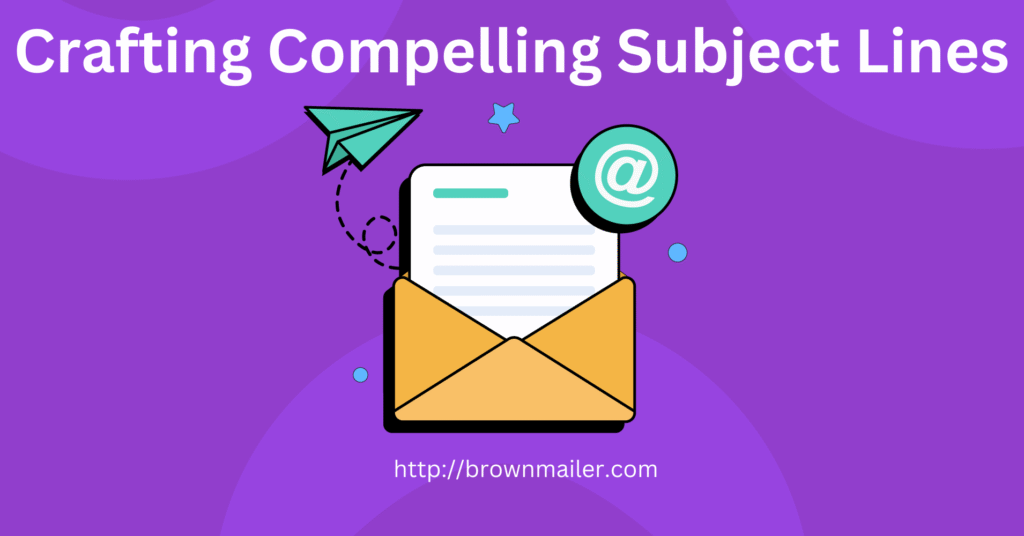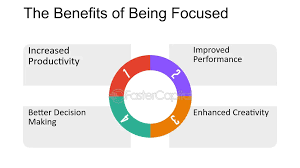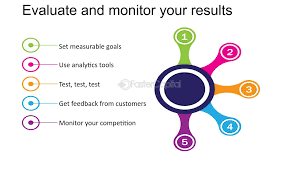Marketing emails are a powerful tool for businesses. They can help you connect with customers, share important news, and drive sales. But writing a good marketing email is not always easy. With so many emails flooding inboxes daily, you need your message to stand out. In this blog, we’ll guide you step by step on how to write a marketing email that engages your audience effectively.
Step 1: Know Who You’re Talking To
Before you even write the email, it’s essential to know who you’re sending it to. You must have a clear idea of your ideal customer. This is called a “buyer persona.” A buyer persona is a detailed description of your target customer.
Understanding your audience helps you write better emails. You can create emails that speak directly to their needs and interests. For example, if you are selling fitness products, you might have one persona for gym enthusiasts and another for beginners. Each group will respond to different messages.
How to Build Your Buyer Persona
You can start by gathering data on your current customers. Look at their age, location, job, and interests. The more details you have, the better you can craft an email that resonates with them. You can also look at the products or services they have already shown interest in. This will help you personalize your message.
Segmenting Your Email List
Once you know your audience, you need to segment your email list. Segmentation means grouping your subscribers into smaller lists based on their interests, behavior, or past actions. For example, you can have lists for:
- New subscribers
- People who purchased recently
- Customers who haven’t bought anything in a while
Segmenting your list makes your emails more relevant and increases the chances that your audience will engage with them.
Step 2: Craft a Compelling Subject Line

The subject line is the first thing your readers see. If it’s not interesting, they won’t open your email. A good subject line should make the recipient want to click.
Tips for Writing a Great Subject Line
- Keep it short and sweet: People check emails on their phones, and long subject lines may get cut off. Keep your subject line under 50 characters.
- Personalize it: Use the recipient’s name or refer to something specific that they are interested in. For example, “John, check out our new product.”
- Create curiosity: Give a hint of what’s inside, but don’t reveal everything. For example, “You won’t believe what we have for you today!”
- Ask a question: Asking a question can make the reader curious. For example, “Ready to boost your sales?” or “Do you want to learn more?”
- Use action verbs: Strong action words like “Shop Now” or “Discover” can prompt the reader to take action.
- Include emojis (if relevant): Emojis can make your email stand out, but be careful not to overuse them. Use emojis that are relevant to your message.
The Importance of Testing Your Subject Lines
If you want to know what works, try testing different subject lines. This is called A/B testing. You can test two subject lines and see which one gets more opens. This will give you valuable insight into what your audience likes.
Step 3: Personalize the Email Content
People like to feel special. Personalization is key to making your audience feel valued. You can start by addressing the recipient by their first name. You can also refer to their past interactions with your brand, like their recent purchase or a product they’ve shown interest in.
Personalization goes beyond just using names. You can use past data to suggest products that might interest the reader. For example, if someone bought a yoga mat, you could send them an email about yoga accessories.
Examples of Personalized Email Content
- First Name: “Hi Jane, we have a special offer just for you.”
- Past Purchase: “Since you bought the yoga mat, we thought you’d love this new set of resistance bands.”
- Behavior-Based: “You left items in your cart, and we have a special discount waiting for you.”
Why Personalization Works
Personalization helps build trust and makes your customers feel like you understand their needs. Studies show that personalized emails lead to higher open rates and better customer engagement.
Step 4: Build a Relationship with Your Audience
Email marketing is not just about selling. It’s also about building relationships. Use your emails to connect with your audience on a deeper level. Share your company’s story, values, or behind-the-scenes updates.
Building a relationship takes time, but email is a great tool for doing so. You can send emails that share interesting news or useful tips. Over time, this helps your customers feel more connected to your brand.
Show Your Personality
Don’t be afraid to show a little personality in your emails. This can be in the way you write or through special offers that make customers feel important. For example, offering early access to a sale or special promotions for loyal customers can go a long way in building trust.
Step 5: Focus on the Benefits

When writing a marketing email, always think about what your reader will gain from reading it. The goal is to show them the benefits of what you’re offering. If you can’t explain how the product or service will improve their life, then it might be time to reconsider your message.
Instead of just listing features, focus on how the product can help solve a problem. For example, instead of saying “Our shoes are made with premium leather,” say “These shoes will keep your feet comfortable all day long.”
What to Include in Your Email
- Clear language: Use simple words and short sentences. Avoid jargon that your audience may not understand.
- Value: Make sure you’re offering something valuable, whether it’s a discount, useful information, or an exclusive offer.
- Credibility: Show your audience that you’re trustworthy. Mention customer reviews or certifications to build confidence in your product.
Example of Emphasizing Benefits
Instead of saying “We offer a 20% discount,” say, “Save 20% on your next purchase and enjoy our premium-quality service.”
By focusing on the benefits, you help your readers see the value in what you’re offering and make them more likely to take action.
Step 6: Inspire Action
Every marketing email should encourage the reader to take action. Whether it’s clicking a link, making a purchase, or signing up for a webinar, your email needs to drive engagement.
How to Inspire Action
The main tool to encourage action in your emails is the Call to Action (CTA). A CTA tells the reader exactly what to do next. It should be clear, concise, and direct. Here are some tips for crafting a great CTA:
- Use action-oriented words: Your CTA should tell the reader exactly what you want them to do. Phrases like “Buy Now,” “Get Started,” “Learn More,” and “Download Your Free Guide” are effective.
- Create urgency: Encourage your readers to act quickly. For example, “Limited Time Offer” or “Hurry, Offer Ends Soon” can push people to take immediate action.
- Make it stand out: Use contrasting colors or bold text to make your CTA easy to find. The clearer it is, the more likely people will click.
- Place it strategically: Place your CTA where it makes sense within the email. You can put one at the top and another at the end. This way, even if someone doesn’t scroll all the way to the bottom, they’ll still see it.
- Offer something valuable: Sometimes, offering a free download or a special deal can drive action. For example, “Click to get your free 30-day trial” can be more effective than just a “Learn More” link.
Example of a Good CTA
“Claim Your 20% Discount Now” is clear and actionable. It tells the reader what they’ll get and what to do next.
Use Time-Sensitive Offers
Creating a sense of urgency can be a great way to inspire action. For example, if you’re offering a discount or a special deal, let people know it’s available for a limited time. Adding a countdown timer to your email is a great way to visually remind readers that they need to act fast.
Why Urgency Works
Urgency taps into the fear of missing out (FOMO). People don’t want to miss a good deal or opportunity. By making your offer time-sensitive, you can push your audience to take action before it’s too late.
Step 7: Keep in Touch and Stay Connected

Email is one of the most effective ways to maintain a relationship with your audience. Even after someone makes a purchase or signs up for your service, it’s important to keep in touch.
Why Staying Connected Matters
The more you stay in touch, the more likely your customers are to return. Regularly engaging with them through email can help you:
- Build trust
- Keep your brand top of mind
- Encourage repeat purchases
How to Stay Connected
Here are some ways you can use email to keep in touch:
- Send regular newsletters: Share updates, news, and valuable content with your audience.
- Invite people to join your community: Encourage your subscribers to follow you on social media or join your online group. If they want to be involved, they can connect with you outside of just email.
- Provide contact options: Always make it easy for customers to contact you. Include your email address, phone number, and social media links in every email.
Personalize Your Follow-ups
After a customer makes a purchase, you can send a thank-you email. But don’t stop there! You can also send follow-up emails asking them how they like the product, offering tips on how to use it, or suggesting related products.
Example of Staying Connected
You can send a follow-up email saying, “Thanks for your purchase! We hope you’re enjoying your new shoes. Here’s how to take care of them.” This personal touch can make your customers feel valued and encourage them to buy again in the future.
Step 8: Test and Optimize Your Emails
To make sure your emails are effective, you must test different parts of them. This is called A/B testing, and it’s crucial for improving your email marketing strategy.
What to Test in Your Emails
There are many variables you can test to see what works best for your audience:
- Subject Line: As we discussed earlier, the subject line is crucial. Test different subject lines to see which one gets the highest open rate.
- CTAs: Try testing different CTAs to see which one gets the most clicks. For example, test “Buy Now” against “Get Your Deal” to see which one performs better.
- Content: The tone and length of your email matter. Try testing shorter emails against longer ones, or formal language against a more conversational tone.
- Images: Test whether using images increases or decreases engagement. Sometimes, plain text emails perform better than those with lots of images.
- Email Timing: The time you send your email can affect its performance. Test sending emails at different times of the day or on different days of the week to see when your audience is most likely to open and engage with them.
Tools for Testing
Many email marketing platforms, like MailChimp or Constant Contact, offer A/B testing features. These tools can automatically split your email list into two groups and send out different versions of your email. Then, they will track which version performs better.
Why Testing is Important
Testing gives you insights into what your audience likes and dislikes. With this knowledge, you can continuously improve your email campaigns. Small changes, like a better subject line or more compelling CTA, can lead to better results over time.
Step 9: Use Automation Tools
If you’re managing a lot of emails, automation tools can be a huge help. These tools allow you to schedule emails, segment your audience, and track performance all in one place.
Why Use Automation?
Automation saves time and ensures you’re always staying in touch with your audience. It also helps you send personalized emails based on customer behavior. For example, you can automatically write a marketing email to send a welcome message when someone subscribes to your list, or send a reminder if someone has abandoned their cart.
Popular Email Automation Tools
- MailChimp: Great for beginners with easy-to-use features.
- HubSpot: Offers advanced segmentation and automation features.
- ActiveCampaign: Known for its automation workflows and CRM features.
Benefits of Email Automation
- Saves time: Automate your emails so you don’t have to manually send them.
- Personalization: Send personalized messages at the right time based on customer actions.
- Efficiency: Automate follow-ups and reminders to boost engagement.
Step 10: Monitor Your Results

Once you’ve sent your email, the work isn’t over. It’s essential to monitor your results to understand how effective your campaign was. Key metrics, such as open rates, click-through rates, and conversion rates, will give you valuable insights into what’s working and what’s not.
Key Metrics to Track
Here are the most important metrics to monitor:
- Open Rate: This shows how many people opened your email. A low open rate could mean your subject line wasn’t compelling enough or that your audience isn’t interested in the topic.
- Click-Through Rate (CTR): This tracks how many people clicked on a link inside your email. It shows how engaging your content is and whether your CTA is effective.
- Conversion Rate: This tells you how many people took the action you wanted them to take, such as making a purchase or signing up for a webinar.
- Bounce Rate: This tracks how many emails didn’t reach your recipients. A high bounce rate could indicate problems with your email list, such as invalid email addresses.
- Unsubscribe Rate: This shows how many people unsubscribed after receiving your email. If your unsubscribe rate is high, it could mean your content isn’t relevant or your emails are too frequent.
How to Improve Based on Your Results
Once you have your data, it’s time to analyze it and make improvements. Here are some things you can do:
- Improve Subject Lines: If your open rates are low, test different subject lines. Try making them more intriguing or adding personalization.
- Refine Your CTAs: If your click-through rate is low, try changing your CTA. Make it clearer or more action-oriented.
- Segment Your Audience: If certain groups of people are more likely to engage with your emails, try sending more targeted messages to them.
Use Tools to Analyze Your Results
Many email marketing platforms offer built-in analytics tools to track your email performance. Some of the top platforms, like Mailchimp, Constant Contact, and HubSpot, provide easy-to-understand reports on key metrics to help you write a marketing email that resonates with your audience and drives better results..
Step 11: Stay Compliant with Email Regulations
Email marketing has legal regulations you need to follow to protect your brand and your subscribers. One of the most important regulations is the General Data Protection Regulation (GDPR) in Europe, and there are also CAN-SPAM Act rules in the United States.
What You Need to Do
- Get Consent: Always get permission from users before sending them marketing emails. This is usually done through an opt-in form on your website.
- Include an Unsubscribe Option: Make sure every marketing email has a clear option for recipients to unsubscribe if they no longer want to receive emails.
- Be Transparent: Inform subscribers about how their data will be used, especially if you plan to share it with third parties.
- Follow Anti-Spam Laws: Avoid sending too many emails to people who haven’t engaged with your messages. Spamming can damage your reputation and get you blacklisted.
Why Compliance Matters
Write a marketing email that stays compliant with email regulations. Not only does this protect you legally, but it also helps build trust with your audience. People are more likely to open emails from companies they trust, and respecting privacy regulations is a good way to earn that trust.
Step 12: Keep Improving and Evolving
Email marketing is a dynamic field. What works today might not work tomorrow. As technology advances, new tools and strategies will become available. The key to long-term success is to stay curious, keep testing, and always look for ways to improve.
Trends to Watch
Some trends that are shaping the future of email marketing include:
- AI and Automation: Artificial intelligence is changing the way emails are written and personalized. With AI, you can create more customized content that speaks to the unique needs of each customer.
- Interactive Emails: Interactive elements like quizzes, polls, and videos are becoming more popular in emails. These can increase engagement and make your emails more fun.
- Personalized Email Experiences: The future of email marketing is all about creating hyper-personalized experiences. By using data to understand your customers better, you can deliver highly relevant content.
- Mobile Optimization: As more people read emails on their phones, optimizing your emails for mobile devices is essential. Make sure your emails are easy to read and navigate on smaller screens.
Keep Learning
The world of email marketing is always changing, and there’s always something new to learn. Stay updated on best practices, new tools, and emerging trends to keep your emails fresh and engaging.
Final Thoughts
Write a Marketing Email: Writing an effective marketing email takes time, but following a few simple steps can help. Keep your message relevant and personalized to your audience. Craft a catchy subject line to grab attention, and always include a clear call to action, guiding your reader on what to do next.
Write a Marketing Email that builds relationships with your audience, offers value, and inspires action. By using the right strategies and staying up to date with trends, you can create campaigns that not only stand out in the inbox but also deliver real value to your subscribers.
Frequently Asked Questions (FAQ)
1. What is the first step when I want to write a marketing email?
To write a marketing email, start by defining your goal. Determine what you want to achieve—whether it’s increasing sales, promoting a product, or informing your audience about a new service.
2. How can I make my subject line stand out when I write a marketing email?
To grab attention, write a subject line that is clear, concise, and intriguing. Use action words and make sure it reflects the content of your email to entice the recipient to open it.
3. Should I personalize my marketing email?
Yes, personalization is key to writing a marketing email that engages your audience. Address the recipient by name and tailor the content to their interests or past interactions with your business.
4. How do I write a marketing email that encourages action?
To encourage action, include a strong and clear call-to-action (CTA). Make sure your CTA is easy to find and motivates the reader to take immediate action, such as “Shop Now” or “Learn More.”
5. What is the best length for a marketing email?
When you write a marketing email, aim for brevity. Keep it between 50 to 200 words, focusing on delivering value quickly while keeping your message clear and actionable.






Leave a Reply